IEC 60529- Ingress Protection Test
IEC 60529, also known as the Ingress Protection (IP) Code, is an international standard developed by the International Electrotechnical Commission (IEC). It classifies and rates the degree of protection provided by mechanical casings and electrical enclosures against the intrusion of solid objects, dust, accidental contact, and water. The standard is widely used across various industries to specify the protective capabilities of enclosures, ensuring the safety and durability of electrical equipment in different environmental conditions.
Structure of the IP Code
The IP code is composed of two numerical digits and, sometimes, an additional letter. The first digit indicates the level of protection against solid objects, including dust, while the second digit represents the level of protection against liquids. The optional letter can provide additional information, such as protection against specific hazards.
First Digit (Protection against Solid Objects and Dust):
- 0: No protection.
- 1: Protection against solid objects larger than 50 mm (e.g., a hand).
- 2: Protection against solid objects larger than 12.5 mm (e.g., a finger).
- 3: Protection against solid objects larger than 2.5 mm (e.g., tools, wires).
- 4: Protection against solid objects larger than 1 mm.
- 5: Dust-protected. Limited ingress of dust is permitted, but it must not interfere with the operation of the equipment.
- 6: Dust-tight. No ingress of dust; complete protection against contact.
Second Digit (Protection against Liquids):
- 0: No protection.
- 1: Protection against vertically dripping water.
- 2: Protection against dripping water when tilted up to 15°.
- 3: Protection against spraying water at an angle up to 60° from vertical.
- 4: Protection against splashing water from any direction.
- 5: Protection against water jets from any direction.
- 6: Protection against powerful water jets.
- 7: Protection against temporary immersion in water (up to 1 meter depth for 30 minutes).
- 8: Protection against continuous immersion in water (conditions specified by the manufacturer).
AS 60529 is the Australian adoption of the IEC 60529 standard, dealing with degrees of protection provided by enclosures (IP Code).
Other Safety Standards
Click Here to know more
Click Here to know more
Click Here to know more
Click Here to know more
Click Here to know more
Click Here to know more
Click Here to know more
Click Here to know more
Category | Application | Relevant Standards |
Mobile Phones | Dust-tight, protection against immersion in water (up to 1m or more). | IP67, IP68 |
Laptops | Dust-tight, protection against low-pressure water jets. General Purpose Luminaires | IP65, IP67 |
Outdoor Lighting Fixtures | Dust-tight, protection against high-pressure water jets. | IP65, IP66 |
Industrial Control Panels | Limited dust ingress, protection against water spray from all directions. | IP54, IP55, IP65 |
HVAC Units | Limited dust ingress, protection against splashing water. | IP44, IP54 |
Company Strengths at a glance
Why C-PRAV?
C-PRAV offers a full range of testing services under the IEC 60529 standard. We can evaluate products for all levels of ingress protection, from basic dust and water resistance to more stringent requirements like complete dust-tightness and protection against continuous immersion.
For more information about IEC 60598
Quick FAQ'S
An IP Code consists of two digits: the first digit indicates protection against solid objects and dust, while the second digit indicates protection against moisture and liquids. For example, in IP67, “6” represents dust-tight protection, and “7” indicates protection against temporary immersion in water.
Manufacturers must design and test their products according to the standard’s requirements, including electrical safety, mechanical construction, thermal management, and photometric performance. Comprehensive documentation and testing reports are necessary for certification.
Yes, IEC 60598 includes particular requirements for outdoor luminaires, focusing on ingress protection (IP rating) against water and dust, as well as durability in various weather conditions.
The IP (Ingress Protection) rating indicates the degree of protection provided by the luminaire against solid objects, dust, and water, ensuring suitability for specific environments.
Photometric performance requirements ensure that luminaires provide adequate and consistent lighting levels, color rendering, and light distribution for their intended application.
Manufacturers must provide detailed technical documentation, including design specifications, test reports, risk assessments, and user manuals, to demonstrate compliance with the standard.
